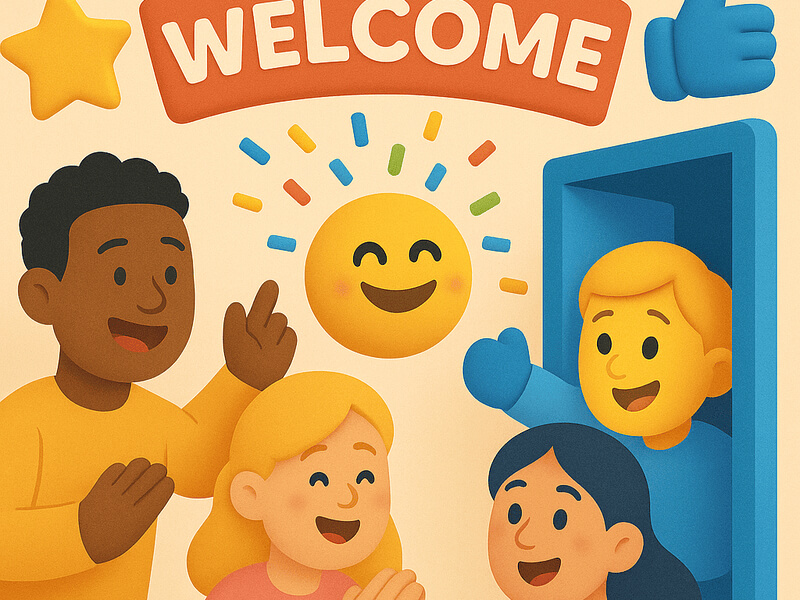
Statistics on employee recognition can be invaluable to businesses. Employee recognition programs, such as peer recognition and rewards for exceptional work, can significantly impact cultivating an engaged workforce committed to their job and organization. With access to accurate statistics on employee recognition, organizations can gain valuable insights into their existing program and make informed decisions about its effectiveness.
In this post, we'll explore the benefits of statistics on employee recognition and why it is essential to include them in any recognition program. We will also provide key statistics on employee recognition in the workplace that businesses should be aware of. Finally, we'll discuss how organizations can get accurate statistics on employee recognition and how they can put this data into practice to achieve maximum success.
5+ benefits of statistics on employee recognition
Statistics on employee recognition can provide employers with valuable information about the effectiveness of their employee engagement, recognition program, and peer recognition strategies. By gathering and analyzing recognition statistics, employers can track how well-engaged employees feel after being recognized by their peers or from a formal recognition program. Some companies even scrape LinkedIn profiles by using any Web Scraping tool to collect data on employee achievements, providing a broader view of employee engagement trends. For example, using residential IPs during this process can ensure anonymity, reduce the risk of detection, and help bypass location-based restrictions. This data can then be used to adjust existing recognition programs, peer recognition strategies, and employee engagement initiatives to ensure they are maximizing their impact on their employees.
Through recognition statistics, employers also have a better understanding of how employee engagement is linked to productivity and overall morale within the workplace. In addition, gathering these statistics can provide invaluable insights into how employees respond to various forms of recognition and ultimately lead to more effective and engaging recognition programs.
- Leverage peer recognition: By leveraging employee recognition statistics, you can determine which areas of your organization are excelling in peer recognition and where there is room for improvement. This allows you to allocate resources or adjust rewards accordingly to ensure employees receive the recognition they deserve individually.
- Boost engagement and productivity: Statistics on employee recognition can show how often employees receive recognition, how well they understand their roles, and how effectively reward systems cultivate engaged employees. For example, by using data extraction tools, organizations can gather key performance data from HR systems, employee surveys, and feedback forms, allowing them to refine their rewards programs for better engagement. This data can help you make informed decisions about the effectiveness of your rewards program so you can better encourage engagement.
- Identify areas for improvement: Recognition statistics allow you to track trends and pinpoint areas where recognition is lacking or not meeting the desired standards. This will enable you to adjust your program accordingly and ensure that employees receive appropriate recognition, leading to decreased turnover rates and improved morale.
- Understand reward preferences: Employee recognition data also gives insight into the type of reward systems employees find the most motivating. This helps you to craft employee recognition awards that reflect their preferences and encourages them to stay motivated and engaged.
- Improve ROI: With accurate data on recognition, you can assess your program's return on investment (ROI) and ensure your efforts are paying off effectively. This enables you to get the most out of every dollar spent and maximize your recognition program.
- Foster a positive workplace culture: Statistics on employee recognition also help you create an atmosphere where employees feel appreciated and valued for their work. This can foster a positive workplace culture that encourages collaboration, creativity, and innovation.
Recognition statistics are essential for measuring the effectiveness of your employee recognition program and ensuring it's meeting its goals. With the correct data, you can pinpoint areas that need improvement, craft rewards based on preferences, and maximize ROI for a successful program that helps foster an engaged workplace culture.
What statistics on employee recognition tell us
Employee recognition, in the form of appreciation or rewards, is a key factor in employee retention and satisfaction. Research shows that organizations with strong employee recognition programs have higher rates of employee retention and lower turnover rates. By giving them a feeling of purpose and drive, employee recognition can assist in increasing productivity in addition to staff morale and engagement levels.
Employee appreciation can also have a positive impact on the employee experience. Studies have shown that employees are more likely to be happy with their jobs if they feel appreciated, and those who are recognized for their work are more likely to stay with the company for a long time. Recognition programs can also help create better relationships between employers, employees, and colleagues, leading to improved communication and collaboration. By recognizing employee effort, organizations can make their employees feel valued, creating a more positive work environment which ultimately leads to increased productivity. In short, recognizing employees directly impacts employee retention, experience, satisfaction, and productivity. When employers take the time to recognize their staff members for their commitment and effort, it can have long-lasting positive benefits for everyone involved.
Therefore, statistics on employee recognition tell us that taking the time to show appreciation can significantly impact the workplace, leading to better morale and more satisfied employees who are motivated to stay and contribute to a productive work environment. By investing in recognition programs, employers can reap the rewards of happier employees and increased productivity.
6 important statistics on employee recognition in the workplace
Important statistics on employee recognition in the workplace include employee turnover, employee satisfaction, and company culture. For example, a study by the Society of Human Resource Management showed that companies with an effective approach to recognizing good work have 31% lower employee turnover than those without a program. According to a study, employees who receive recognition are also more likely to be happy in their jobs and stay with the company.
In addition, companies with engaged employees are linked to a higher level of job satisfaction and a more robust overall company culture. Recognizing employee contributions helps build trust and commitment between the employer and employee, resulting in increased productivity and a better work environment. Thus, recognizing employees for their good work is essential to creating a positive workplace.
- Employee turnover: It is crucial to measure and comprehend the pace at which individuals quit their employment because the typical cost of replacing an employee can be in the tens to hundreds of thousands of dollars. High turnover rates can indicate a need for recognition in the workplace, meaning that employees aren't feeling valued and are likely to look for employment elsewhere. See how much you could save on employee turnover costs.
- Employee satisfaction: Understanding employee satisfaction is essential in creating a workplace where employees feel supported, respected, and valued. By measuring employee satisfaction levels, you can determine if recognition programs impact your employees' overall job happiness.
- Company culture: Having a positive company culture is essential for employee recognition. By measuring the overall work environment and how employees perceive their workplace, you can create a culture of appreciation and recognition that will benefit both management and staff.
- Good work: Measuring how often good work is recognized in the workplace can give insight into whether your recognition program is working. Research has shown that employees who feel their good work is acknowledged are more likely to be engaged and motivated, so it's essential to measure the frequency of recognition in your workplace.
- Engaged employees: Employee engagement is a critical factor in employee retention and satisfaction, so understanding how engaged your employees are is essential. By measuring the level of employee engagement, you can assess how well your recognition programs are working and make adjustments where necessary.
- Job satisfaction: Understanding job satisfaction is another important statistic to measure regarding employee recognition in the workplace. When employees feel valued and appreciated for their work, they're more likely to be more productive and satisfied with their job.
Getting accurate statistics on employee recognition
Employee appreciation is a crucial strategy for inspiring and rewarding workers for their commitment and perseverance. Accurate statistics on employee recognition can be a valuable asset in understanding the impact of rewards and incentives on workforce engagement, productivity, and morale. Therefore, it is important to gather accurate statistics on employee recognition to ensure that your company's employee reward policies are effective.
One way to do this is through employee reward gateway platforms and employee recognition software, alongside social media reporting tools that can help analyze employee sentiment and engagement through social media channels. These tools allow employers to track how their employees respond to rewards and incentives and identify areas where further investment in rewarding employees may be necessary. With these insights, companies can tailor their reward systems to meet their employees' needs better, helping to ensure that they are engaged and motivated. Additionally, these tools can track influencer ROI, ensuring that rewards and incentives lead to tangible results and employee satisfaction.
Putting statistics on employee recognition into practice
Employee recognition is a key factor in promoting employee engagement and productivity. Studies have shown that companies that use employee rewards programs, as well as an effective employee recognition tool, experience significant increases in employee morale, engagement, and productivity. Using employee recognition ideas is also a great way to motivate staff and foster a sense of team spirit.
For companies to get the most out of their recognition program, they must ensure that employees are regularly rewarded for great work. Employers should strive to recognize employees in meaningful ways and create an environment where they feel valued and appreciated. Regular feedback and recognition of employees' accomplishments are essential for motivating employees to stay engaged and productive.
Through employee rewards, employers can also help foster a culture that encourages teamwork and collaboration among staff members. Feedback Friday is the perfect solution to recognizing staff to gamify productivity while viewing the statistics on your Matter app analytics dashboard of what is working and is not. Ultimately, rewarding employee success is a great approach to raising spirits and productivity at work.
Final thoughts on statistics on employee recognition
In conclusion, statistics on employee recognition show that when employers implement programs like employee rewards and recognition tools, it can increase the engagement of their employees. In addition, it leads to better morale and can directly result in higher productivity. By taking the time to recognize great work, employers can earn loyalty from their team members and create a positive work environment.
Employee recognition awards are one way to ensure that employees feel valued and appreciated. Employers should ensure that they have a system in place to recognize the great work of their team members and show appreciation for their contributions. The benefits of such an investment are clear and can lead to improved morale, boosted engagement, and increased productivity—all essential components for any business's success.
Are statistics on employee recognition important to you? Create a bottom-up culture with team recognition, celebrations, and rewards — all inside Slack or Microsoft Teams. Get started for free by adding Matter to your workspace.
























